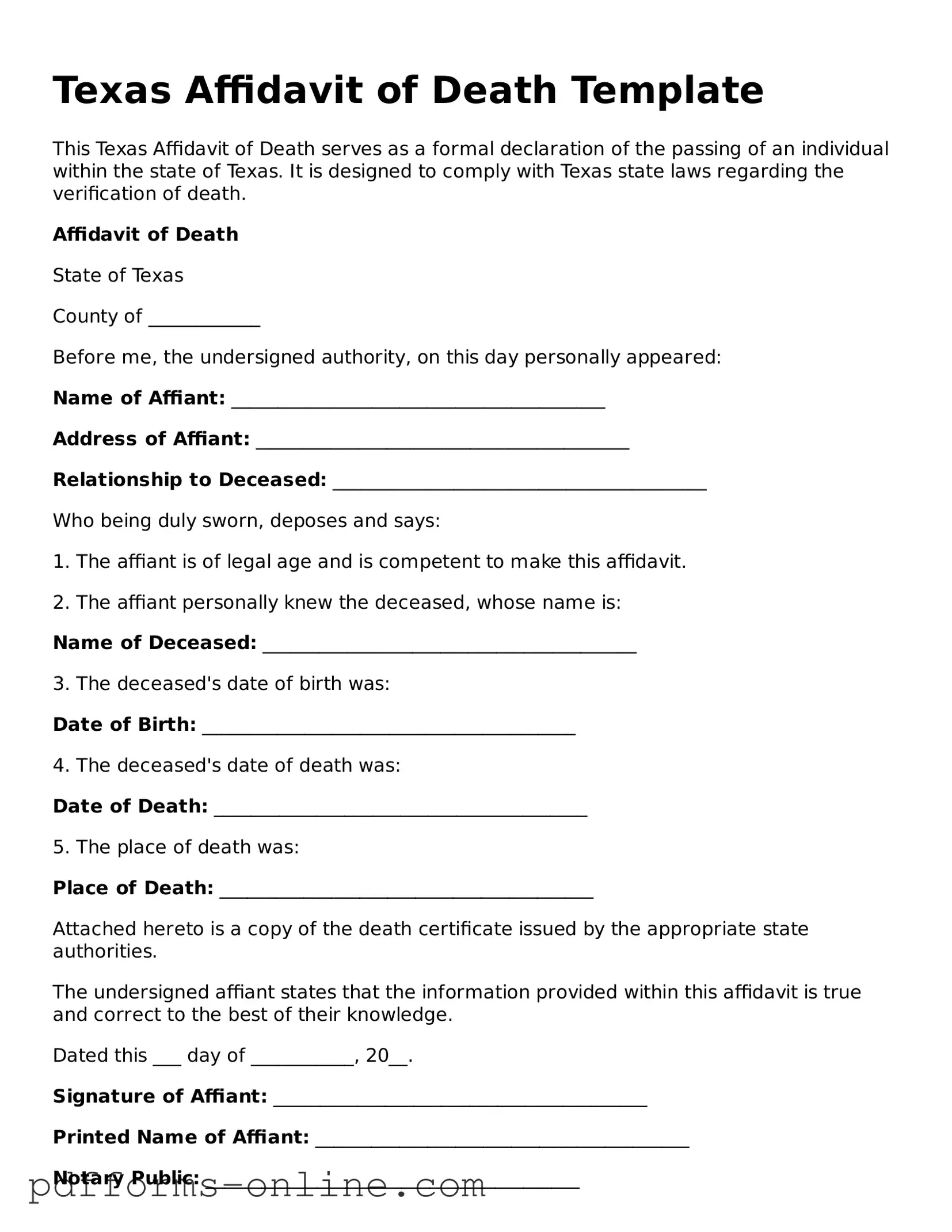Texas Affidavit of Death Template
This Texas Affidavit of Death serves as a formal declaration of the passing of an individual within the state of Texas. It is designed to comply with Texas state laws regarding the verification of death.
Affidavit of Death
State of Texas
County of ____________
Before me, the undersigned authority, on this day personally appeared:
Name of Affiant: ________________________________________
Address of Affiant: ________________________________________
Relationship to Deceased: ________________________________________
Who being duly sworn, deposes and says:
1. The affiant is of legal age and is competent to make this affidavit.
2. The affiant personally knew the deceased, whose name is:
Name of Deceased: ________________________________________
3. The deceased's date of birth was:
Date of Birth: ________________________________________
4. The deceased's date of death was:
Date of Death: ________________________________________
5. The place of death was:
Place of Death: ________________________________________
Attached hereto is a copy of the death certificate issued by the appropriate state authorities.
The undersigned affiant states that the information provided within this affidavit is true and correct to the best of their knowledge.
Dated this ___ day of ___________, 20__.
Signature of Affiant: ________________________________________
Printed Name of Affiant: ________________________________________
Notary Public: ________________________________________
My Commission Expires: ________________________________________
State of Texas
County of ____________
Subscribed and sworn to before me on this ___ day of ___________, 20__.
Notary Public Signature: ______________________________________
Printed Name: ________________________________________
Seal:
